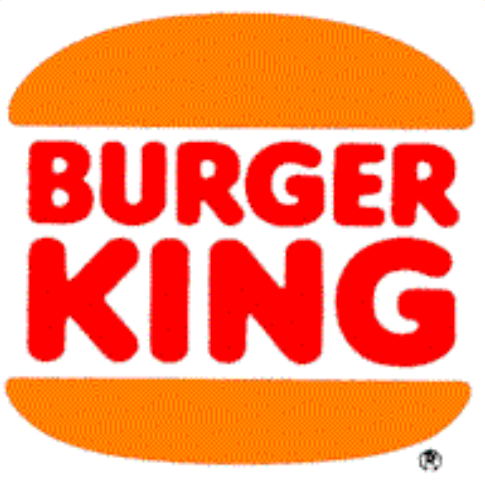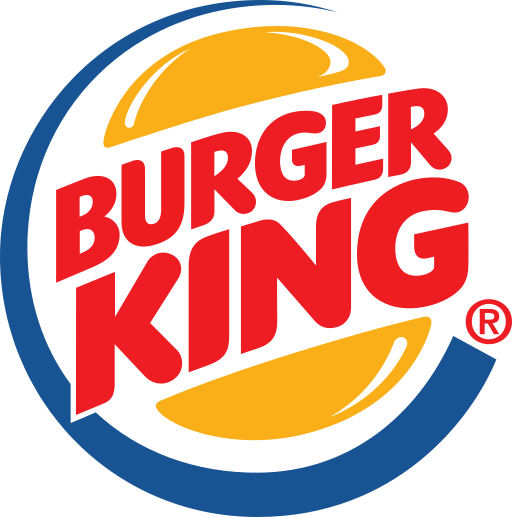We all grow and change over time… so why not brands? Whether selling new products or just simply updating a logo, a rebrand keeps a company modern and reminds customers that, yes, they are still in business.
But rebranding shouldn’t be taken lightly. Not only does it take time and money, but your company’s reputation is at stake if you miss the mark. So below we explain what you need to know about rebranding: what it is, when it’s right and how to do it in 7 steps.

What is rebranding?
—
Rebranding is simply when a company redoes or improves any of its branding elements: logo, color palette, typography, etc. The idea is that if a company is changing, and they want people to know about it.
You can rebrand as much or as little as you want, from simply changing your slogan to changing everything including your company name. It helps to think about it as three different categories:
- Brand refresh—You change minor details only, such as modernizing individual aspects of your logo or slightly changing the hues of your color palette.
- Partial rebrand—You change certain elements but not others, such as using a new logo that uses elements, themes and colors from your old logo.
- Full rebrand—You change everything as if you were a completely different company.




While rebranding isn’t always necessary, if you move forward with it there is a sacrifice involved. For starters, there’s the cost of rebranding—anything from hiring a one-time logo designer to funding a worldwide, multimedia ad campaign to launch your new look. That’s not just an investment of money, either, but of time and human resources as well.
On top of that, rebranding always carries a risk that your new brand won’t perform as well as your old one. You can mitigate this risk through proper planning and following the steps below, but nothing is foolproof. That’s why a company should only consider a rebrand when the time is right.
When is it time to rebrand?
—
How do you know when it’s time to rebrand? Below are some common red flags that signal rebranding might be a good idea.
You’re changing your products/services
We’re not talking about introducing one or two new products or offering your flagship item in a new color. If you’re breaking into a new market, a rebrand is a good way to garner attention and (re)introduce yourself.


That goes for pricing as well. If your company is known for its high-end and exclusive goods and you want to offer that same kind of product to newer customers at a lower cost, rebranding can ease the transition.
Likewise, if you’re using a new ingredient or material, or if you’re modifying your service in some way, rebranding can draw positive attention to the change. Maybe you’re switching to organic products and want to rebrand yourself as an “all natural” brand—that requires a whole new branding strategy.
You’re expanding or pivoting to a new audience
Similar to changing your products or services, if you’re expanding your business into a new demographic or changing your main target entirely, you’ll need to rethink your branding strategy.

Different customers have different preferences for what kinds of brands they want to do business with—that’s all part of the psychology of branding. If your customer base is changing, you want to optimize your brand elements to suit them.
Your current branding misses the mark
Maybe your original branding never performed as well as you wanted. Maybe you’re making one of the common bad branding mistakes. It’s a reasonable misjudgment—what we think our brand should be before we launch can be worlds apart from what it needs to be when we open up shop.
You don’t have to stick with a flawed brand design if it’s hurting your business. A quick rebrand, even just a partial rebranding, can resolve what doesn’t work without harming what does.
You want to distance yourself from a bad reputation
If people start associating your logo, brand name, etc., with a company misstep, it might be best to offer them something new and different to distance themselves from negative connotations.
This isn’t a perfect solution—some customers aren’t so quick to forget. And it takes time to implement new policies and fix errors. However, if you’ve acknowledged your mistakes and worked hard to correct your mistakes, rebranding might help your brand move forward.
You don’t stand out enough from your competition

If your competitors are targeting the same audiences you are, it makes sense that they use the same branding strategies, after all, you both have the same end goal. That’s why you often see similar products with similar packaging, or different companies in the same industry using the same colors.
In situations when it’s hard to tell you and your rivals apart, a rebrand can give you a new face that stands out. You can even use your competitor’s branding to your advantage by designing something that looks better next to it.
Your company structure has changed
Mergers, acquisitions, new leadership, new policies… rebranding is a great way to tell the world your company is going in a new direction.
Of course, this isn’t always necessary—if it ain’t broke, don’t fix it—but in situations where the brand personality is changing from the inside-out, rebranding can broadcast that your company is evolving.
Time makes fools of us all
Think you’re off the hook because none of the other warning signs apply to you. Think again! At some point or another, every company should rebrand, if not after a few years then after a few decades.

Society’s visual tastes and styles never stop changing. Consider the aesthetics of the 1970s versus the aesthetics of the 1920s versus the aesthetics of ancient Greece. Certain looks are associated with certain time periods, and before long your “modern” logo is going to look outdated and old.
It’s best to rebrand yourself periodically, although the precise intervals depend on your company, industry, and target customers. Still, it’s a discussion your company should be having every few years, especially if you notice the trends shifting.
How to rebrand in 7 steps
—
1. Recruit a rebranding team
Once you’ve decided it’s time to rebrand, refresh, partial, or full, your first step is to recruit a rebranding team. Marketers, designers, copywriters, PR—you’ll want a diverse range of input to make sure you cover all your bases.
The big debate here is whether to use in-house personnel or outsource the rebranding work to agencies or freelancers. On the one hand, no one knows your brand better than in-house workers, but on the other hand, maybe an outside perspective is exactly what you need for a fresh start.
2. Evaluate what’s working and what isn’t
The first task of your new rebranding team is to find out what, specifically, is the problem. You’ll want to audit every aspect of your current brand strategy to determine what stays and what goes.
To help you keep track, here’s a checklist of the main branding elements you want to put under a microscope. How does your brand perform in each of the following areas?
- Company name
- Brand positioning
- Logo
- Slogan
- Color palette
- Typography
- Marketing and advertising campaigns
- Social media presence
- Partnerships and affiliates (e.g., influencers)
- Content creation
- Branding voice
- Web design
- App design
- In-store decor
- Sensual interactions (tastes, smells, sounds, etc.)

Your first step should be checking your sales and marketing data. Your preexisting sales data should shed some light on your current brand’s strengths and weaknesses. Which target groups love your existing brand most? Which group do you want to love your brand more? What can you change about your brand to appeal to your main targets?
Your online data is another valuable resource, in particular, your traffic, social media following and marketing campaign performance. Take a look at which channels suit you the best and try to figure out why. Is it the language and content you post, or is it simply that the channel’s built-in audience matches your target?
After a preliminary check, you should have a good idea of where to focus your rebranding attention. However, you shouldn’t rely on guesswork and instinct alone. For a truly successful rebranding, you need to get input from the same people you’re trying to impress.
3. Test target audiences
After your initial evaluation, you should have some ideas and theories for how to rebrand. Instead of diving in head-first, though, it’s best to refine those ideas by collecting data straight from your target audience.

Reach out to your customers and get their opinions directly, like a user test. The details are up to you; bigger companies can afford focus groups or similar outreach, but smaller companies can still conduct online surveys or split tests to determine the specifics of what needs to be changed and how. If you’re really on a tight budget, you can ask your friends and families for their opinions—as long as they fall into your main audience.
Don’t know who your target audience is? Part of a rebranding could be identifying a more lucrative market than the one you’re in. This might be a good time to conduct some separate tests to see which customer groups are most attracted to your products or services. Your branding decisions should be built around them… whoever they are.
4. Analyze your competition
For both branding and rebranding, it pays to look at what your competition is doing and adapt your strategy accordingly. It’s not enough to create the perfect strategy for your audience, you also have to factor in what your competitors are doing and how to one-up them.
Analyzing your competitor’s branding strategy can reveal both good ideas to emulate and bad ideas to avoid. You can see how their branding decisions play out, including room for improvement. For example, if you notice most brands in your industry use the color blue, you can either follow along and reap the same benefits, or risk a bold new color to stand out.

There’s a lot of insights you can gain just by watching your competition, from price points to where they spend their advertising budgets. It’s doubly effective for brands with a tighter marketing budget—you can see the results of your competitor’s ad spend instead of your own. You may not use everything you learn, but it’s good to at least recognize how your branding decisions will affect your market positioning, not just your customers’ opinions about you.
5. Rethink your brand personality and core values
By now you understand what needs to change, what your target customers want and what your rivals are up to. With that, you can start to build your new brand personality—but not without a plan.

Using what you learned, what kind of brand should you become? What kind of brand would best satisfy your customers and succeed amidst the competition? Consider all the essentials—your business model, target customers, marketing budget, branding resources and value points—and find a way to align them all in your rebrand.
It helps to think about your brand as a person. What would it be like to talk to them at a party? Would they be fun, cracking jokes and making pop culture references, or would they be more professional, sharing trade insights with a knowledgeable authority?
If you’re stuck on this part, one exercise is to list 30 adjectives that describe your ideal brand and then pick out your favorites. You can integrate traits like “well-made,” “inexpensive,” “fast” and “friendly” directly into branding decisions like colors, logo imagery and typography.
From there, you can get started on your new brand story. If you’re undergoing a full rebranding, you can also refresh your mission statement and brand values. As long as you have a good idea of the kind of brand you want to build, you’re ready to move forward.
6. Redo problematic elements with your brand’s new direction
Here’s where you actually get your hands dirty. If you’ve decided you need a new logo, get it designed. If you’ve decided you want to partner with a new influencer, find them.
This process benefits from a lot of brainstorming and collaboration, so don’t be afraid to set aside time just for thinking up ideas. Don’t forget everything you’ve learned from the previous steps—this is what it was building up to.
Feel free to return to the earlier checklist to make sure you got everything. Remember you don’t need to change everything, just what’s necessary. Once you have what you need and everyone’s agreed to it, you’re ready to introduce your rebrand to the public.

7. Don’t neglect the launch
Your rebrand launch should be similar to your original launch. Then the goal was to make people aware of your brand, now the goal is to make people aware that you’ve changed your brand.

Before you go public, consider adding a little hype and anticipation. You can drop teasers and previews in the weeks leading up to your official launch, as well as scheduled events and contests for extra attention. If you’re partnering with new sponsors or influencers, you can have them participate as well.
When it’s time for the public launch, be sure to frame your rebranding as a story. Share some behind-the-scenes details about your rebranding, such as what you like about your new logo or why you’ve changed your values and mission statement. This makes your brand more personable and relatable, plus you come across as more confident about your new look.
The right ways to publicize your rebranding depend on your audience, so go to where they are. Now’s not the time to be humble—you put all this effort into redoing your brand, don’t be afraid to show it off!
